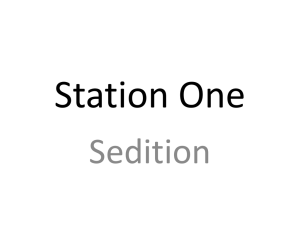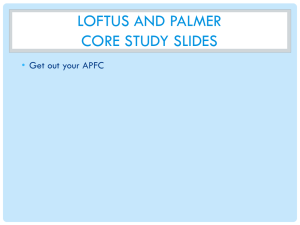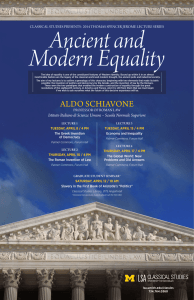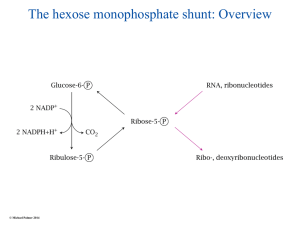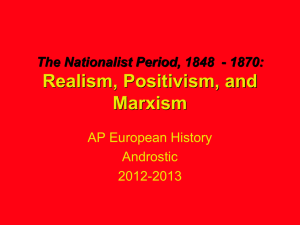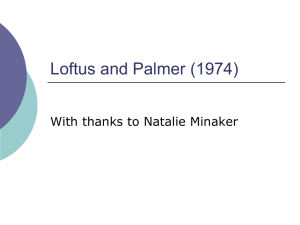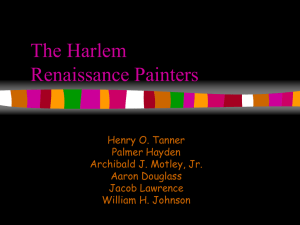6-Respiratory-chain
advertisement
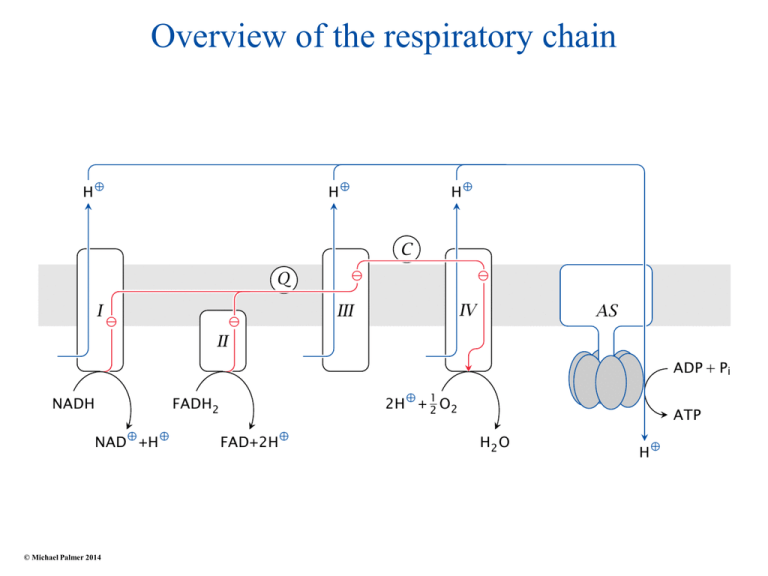
Overview of the respiratory chain © Michael Palmer 2014 Functional stages in the respiratory chain 1. H2 is abstracted from NADH+H+ and from FADH2 2. The electrons obtained with the hydrogen are passed down a cascade of carrier molecules located in complexes I–IV, then transferred to O2 3. Powered by electron transport, complexes I, III, and IV expel protons across the inner mitochondrial membrane 4. The expelled protons reenter the mitochondrion through ATP synthase, driving ATP synthesis Uncoupling proteins dissipate the proton gradient © Michael Palmer 2014 The uncoupling action of dinitrophenol © Michael Palmer 2014 The Racker experiment: bacteriorhodopsin can drive ATP synthase © Michael Palmer 2014 Molecules in the electron transport chain © Michael Palmer 2014 Iron-containing redox cofactors © Michael Palmer 2014 Flavin-containing redox cofactors © Michael Palmer 2014 The respiratory chain produces reactive oxygen species as byproducts © Michael Palmer 2014 Redox reactions can be compartmentalized to produce a measurable voltage © Michael Palmer 2014 The redox potential (ΔE) is proportional to the free energy (ΔG) © Michael Palmer 2014 Redox potentials and free energies in the respiratory chain © Michael Palmer 2014 The first two redox steps in complex I © Michael Palmer 2014 The reduction of coenzyme Q involves protons and electrons © Michael Palmer 2014 The Q cycle (criminally simplified) © Michael Palmer 2014 Reduction of oxygen by cytochrome C oxidase (complex IV) © Michael Palmer 2014 How is electron transport linked to proton pumping? ● Some redox steps in the ETC are coupled to proton binding and dissociation, which may occur at opposite sides of the membrane. Example: Coenzyme Q cycle at complex III ● Redox steps that do not involve hydrogen directly need a different mechanism in order to contribute to proton pumping. Example: Sequence of iron-sulfur clusters and hemes in complex IV Linking electron movement to proton pumping: A conceptual model © Michael Palmer 2014 Proton pumping creates both a concentration gradient and a membrane potential © Michael Palmer 2014 Structure of ATP synthase © Michael Palmer 2014 The binding-change model of ATP synthase catalysis © Michael Palmer 2014 How does proton flux drive ATP synthase? © Michael Palmer 2014 Proton flux causes c chains to rotate within the F0 disk © Michael Palmer 2014 A hypothetical malate-oxaloacetate shuttle © Michael Palmer 2014 The malate-aspartate shuttle © Michael Palmer 2014 The glycerophosphate shuttle © Michael Palmer 2014 The two mitochondrial isocitrate dehydrogenases © Michael Palmer 2014 Nicotinamide nucleotide transhydrogenase couples hydrogen transfer with proton transport © Michael Palmer 2014 At rest, transhydrogenase and the isocitrate dehydrogenases form a futile cycle © Michael Palmer 2014 When ATP demand is high, transhydrogenase turns into an auxiliary proton pump © Michael Palmer 2014 Theoretical ATP per molecule of glucose completely oxidized © Michael Palmer 2014 Processes other than ATP synthesis that are powered by the proton gradient ● Nicotinamide nucleotide transhydrogenase ● Uncoupling proteins; proton leak ● Secondary active transport: ○ ATP4−/ADP3− antiport ○ phosphate/H+ symport ○ amino acid/H+ symport ○ pyruvate/H+ symport
